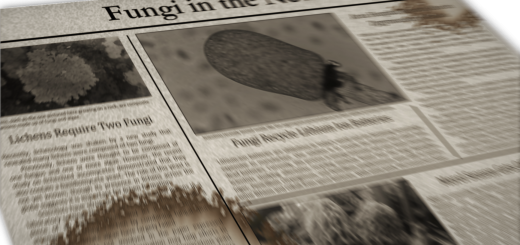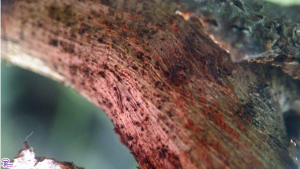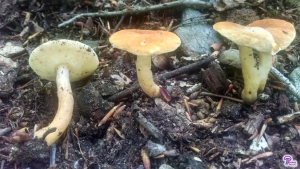#003: Yeast vs. Hyphae
There are two major fungal growth modes: yeast and hyphae. Yeast are single-celled organisms. Hyphae are multicellular,*branching tubes that form mycelial networks. Although “yeast” is commonly used to refer to Saccharomyces cerevisiae, yeast are a very diverse group. Actually, they are not even a single group: yeast are placed into both Ascomycota and Basidiomycota. These are the same two phyla that contain mushrooms, which exhibit hyphal growth. Yeast grow by increasing the volume of the cell and then dividing through mitosis. This mitosis can follow either a fission or budding pattern. In fission, the cell divides in half and the cytoplasm is split equally. In budding, a small bud forms off of the cell. The nuclei replicate and half of them move into the bud. The bud grows in size and eventually separates. At this point the bud is still smaller and the cytoplasm is not divided evenly. Under certain environmental conditions, the yeast cells may not fully separate and may continue dividing in this manner to form long chains of yeast cells known as pseudohyphae. Any cell in the chain may divide again to elongate the pseudohyphae. True hyphae, on the other hand, exhibit apical growth (unidirectional growth from the tip only). Hyphae extend forward, but can branch and fuse with other hyphae to from networks. The network that is formed is the main body (thallus) of the fungus and is known as the mycelium. Many fungi stick to one growth mode or the other, but some can switch between growth modes. The human pathogenic fungus Candida albicans is one such organism, and its transition between yeast and hyphal growth modes is an important factor in its pathogenicity. Yeast are particularly well suited to liquid environments, whereas hyphae are well suited to invading solid substrates. albicans first infects its host as hyphae. This allows it to penetrate tissues, but locks it into one place. C. albicans switches to a yeast mode in order to spread around the body through the blood stream. Both hyphae and yeast exhibit distinctive fungal characteristics, such as spore formation, haploid nuclei, and chitinous cell walls.
*Hyphae are not multicellular in the same way that plant and animal cells are multicellular. For example, organelles often move between hyphal cells. Check FFF#004 for more on this wrinkle.
See further:
http://bugs.bio.usyd.edu.au/learning/resources/Mycology/StructureFunction/dimorphicStructures.shtml
http://bugs.bio.usyd.edu.au/learning/resources/Mycology/StructureFunction/hyphalStructure.shtml


![#013: Characteristics of Phylum Basidiomycota [Archived]](https://www.fungusfactfriday.com/wp-content/themes/hueman/assets/front/img/thumb-medium-empty.png)





![#011: Characteristics of Kingdom Fungi [Archived]](https://www.fungusfactfriday.com/wp-content/themes/hueman/assets/front/img/thumb-small-empty.png)



5 Responses
[…] Fungi may be filamentous or unicellular. Some fungi can even switch between the two growth modes. For more on this see FFF#003. […]
[…] cultivation is that T. fuciformis will grow as a yeast in the absence of its desired substrate (see FFF#003 for more on yeast/hyphal growth modes). These cultures would probably have been presumed to be […]
[…] Fungi produce stationary cells as hyphae or yeast and colonize new areas by growing bigger* (see FFF#003 for more). Slime molds, on the other hand, are cells that can move independently. There are […]
[…] Basidiomycota also include rusts and smuts, which are economically important plant pathogens, some yeasts, and a few lichenized fungi. Like the Ascomycota, the Basidiomycota fill a variety of different […]
[…] or Yeast: Fungi can either grow as hyphae or as yeast (see FFF#003), and some species switch between the two forms depending on the conditions. Hyphae are cylindrical […]